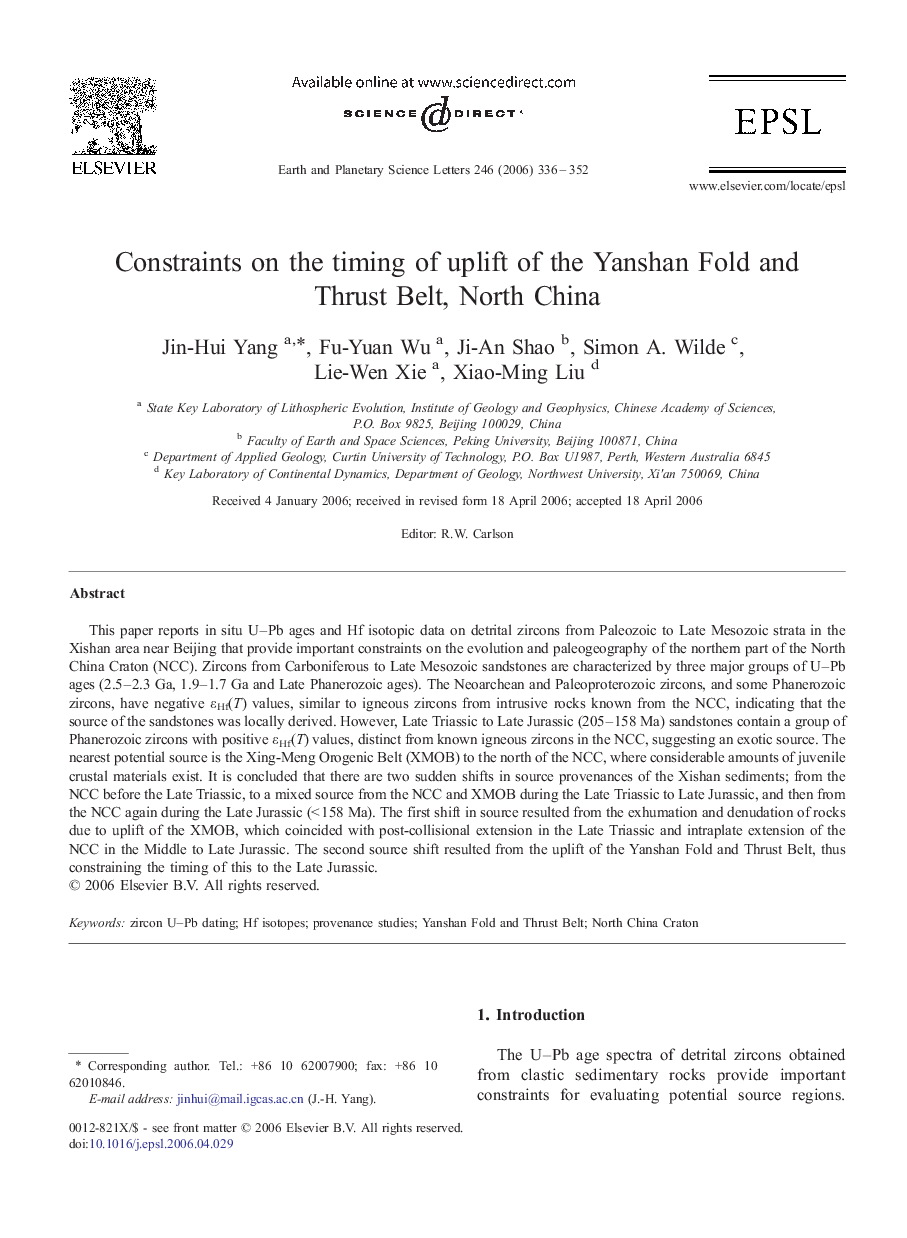| Article ID | Journal | Published Year | Pages | File Type |
|---|---|---|---|---|
| 4680949 | Earth and Planetary Science Letters | 2006 | 17 Pages |
This paper reports in situ U–Pb ages and Hf isotopic data on detrital zircons from Paleozoic to Late Mesozoic strata in the Xishan area near Beijing that provide important constraints on the evolution and paleogeography of the northern part of the North China Craton (NCC). Zircons from Carboniferous to Late Mesozoic sandstones are characterized by three major groups of U–Pb ages (2.5–2.3 Ga, 1.9–1.7 Ga and Late Phanerozoic ages). The Neoarchean and Paleoproterozoic zircons, and some Phanerozoic zircons, have negative εHf(T) values, similar to igneous zircons from intrusive rocks known from the NCC, indicating that the source of the sandstones was locally derived. However, Late Triassic to Late Jurassic (205–158 Ma) sandstones contain a group of Phanerozoic zircons with positive εHf(T) values, distinct from known igneous zircons in the NCC, suggesting an exotic source. The nearest potential source is the Xing-Meng Orogenic Belt (XMOB) to the north of the NCC, where considerable amounts of juvenile crustal materials exist. It is concluded that there are two sudden shifts in source provenances of the Xishan sediments; from the NCC before the Late Triassic, to a mixed source from the NCC and XMOB during the Late Triassic to Late Jurassic, and then from the NCC again during the Late Jurassic (< 158 Ma). The first shift in source resulted from the exhumation and denudation of rocks due to uplift of the XMOB, which coincided with post-collisional extension in the Late Triassic and intraplate extension of the NCC in the Middle to Late Jurassic. The second source shift resulted from the uplift of the Yanshan Fold and Thrust Belt, thus constraining the timing of this to the Late Jurassic.
